Welcome to Daily Banking Digest, your premier source for the latest news and insights on April 15, 2024, focusing on banking, the economy, and finance. Our platform offers a comprehensive overview of the day’s most critical financial stories, market trends, and economic developments. Whether you’re a professional in the financial sector, an investor monitoring market movement, or someone interested in staying informed about the economic landscape, Daily Banking Digest provides reliable, up-to-date information.
Join our Telegram Channel for Daily PDF in your Inbox – Click Here
Table of Contents
Commercial AC Market Poised for Substantial Growth, According to Industry Leader
The commercial air-conditioning (AC) market is experiencing growth due to urbanization, infrastructure development, and the increasing demand for comfort in commercial spaces. The commercial HVAC segment is expanding with applications in offices, retail, healthcare, hospitality, and education. Factors such as indoor air quality awareness, sustainability mandates, and IoT integration are driving innovation and market expansion. The commercial HVAC market holds significant growth potential for both traditional and emerging technologies.

Key Points
Growth Drivers: – Rapid urbanization and infrastructural development – Growing emphasis on comfort in commercial spaces
Market Dynamics: – Shift in commercial HVAC applications – Increasing awareness of indoor air quality – Sustainability mandates – Integration of IoT and building automation systems
Growth Potential: – Opportunities for traditional HVAC systems and emerging technologies (VRF, chilled beams) – Substantial market size reflecting the scale of commercial infrastructure
Market Size: – Indian HVAC industry projected to reach $30 billion
Residential AC Segment: – Anticipated steady growth – Potential nuances due to Quality Control Orders (QCOs) – Moderate to healthy uptick expected this season
Growth Drivers for Residential AC: – Pent-up demand post-pandemic – Technological advancements in energy efficiency and smart connectivity – Regulatory support for sustainability – Changing climate patterns
Market Trends: – Momentum towards energy-efficient models – Entry-level units still hold significant market share – Gradual shift towards energy-efficient inverter AC units
India’s Automobile Exports Decline by 5.5% in Fiscal Year 2024
India’s automobile exports declined by 5.5% in FY24 due to economic challenges in overseas markets. Despite a marginal increase in passenger vehicle exports, commercial vehicle, two-wheeler, and three-wheeler shipments witnessed significant drops. However, the industry remains optimistic about recovery in the coming year.

Key Points
Overall Exports – Declined by 5.5% to 45,00,492 units in FY24.
Reasons for Decline – Monetary crisis in overseas markets, particularly in countries with strong commercial vehicle and two-wheeler exports.
Segment-wise Performance – Passenger Vehicles: Exported 6,72,105 units, a 1.4% increase. – Two-Wheelers: Exported 34,58,416 units, a 5.3% decrease. – Commercial Vehicles: Exported 65,816 units, a 16% decrease. – Three-Wheelers: Exported 2,99,977 units, an 18% decrease.
Top Exporters – Maruti Suzuki: 2,80,712 units – Hyundai Motor India: 1,63,155 units – Kia Motors: 52,105 units – Volkswagen India: 44,180 units – Nissan Motor India: 42,989 units – Honda Cars: 37,589 units
Outlook – Industry remains hopeful for improvement in the situation and recovery in exports.
India Plans to Revamp Steel Import Data Reporting System
India’s Steel Ministry is enhancing the Steel Import Management Systems (SIMS) portal to strengthen reporting norms for import shipments. This move aims to address concerns about misreporting or under-reporting of shipment details. The Ministry is also exploring alternative sourcing countries for coking coal and developing a Green Steel policy.

Key Points:
Strengthening Import Reporting: – The SIMS portal is being upgraded to improve monitoring of import shipments. – Importers are required to register in advance and provide detailed information about steel imports. – The Ministry believes that there have been instances of misreporting or under-reporting of import details.
Steel Import and Export Data: – India imported 8.3 million tonnes of steel in FY24, a 38% increase year-over-year. – Exports stood at 7.4 million tonnes, up 12%. – India was a net importer by around 1 million tonnes.
Domestic Demand and Production: – Domestic steel consumption reached 136 million tonnes in FY24, a 14% increase. – Finished steel production was 138.5 million tonnes, up 12.4%.
Monitoring Imports: – India is renegotiating some of its Free Trade Agreements (FTAs) to monitor steel imports. – The “melt and pour” principle is being considered to ensure that only steel products manufactured in countries with FTAs are eligible for benefits.
Concerns Raised by Tax Authorities over Proposed Amendments to India-Mauritius Tax Treaty
The new India-Mauritius Double Tax Avoidance Treaty (DTAA) protocol has raised concerns among some Income Tax officials. While the protocol aims to prevent tax evasion, it is feared that it may leave room for interpretation in favor of the treaty’s original intent to promote investment. This could lead to increased litigation. Experts hope that the Central Board of Direct Taxes (CBDT) will provide clear guidelines to address these concerns.

Key Points
Article 27B – The amendment to Article 27B aims to deny benefits to entities that enter into arrangements solely for tax avoidance purposes. – However, the amendment leaves room for interpretation, as it allows benefits to be granted if the transaction or arrangement aligns with the original purpose of the treaty, which is to promote investment. – This could potentially undermine the intent of the amendment and allow for tax evasion.
Language of Article 3(2) – The language of Article 3(2) is also a concern, as it could lead to more litigation. – Experts believe that the language raises nuances in interpretation that could be exploited.
Concerns Raised by Income Tax Department – The Income Tax Department has acknowledged concerns raised about the amended DTAA. – The department has clarified that these concerns are premature as the protocol has not yet been ratified and notified. – The department has stated that it will address any queries once the protocol comes into force.
IIFL’s Gold Loan Portfolio Faces Potential Decline Due to RBI Restrictions
CARE Ratings has downgraded IIFL Finance’s credit watch to “Rating watch with negative implications” due to the RBI’s restrictions on its gold loan operations. The agency warns that if the restrictions continue, IIFL’s gold book could run down in the next 2-3 quarters, negatively impacting its liability franchise and financial flexibility.

Key Points
RBI Restrictions on Gold Loans – RBI has ordered IIFL to cease gold loan operations, including sanctioning, disbursing, and securitizing loans. – Gold loans constitute 79% of IIFL’s standalone AUM and 32% of its consolidated AUM.
Impact on IIFL – The restrictions are expected to negatively impact IIFL’s liability franchise and financial flexibility. – CARE Ratings has revised the credit watch on IIFL’s long-term debt instruments and bank facilities to “Rating watch with negative implications.”
Special Audit – RBI has ordered a special audit of IIFL’s gold loan operations. – The auditor will be selected by April 12, 2024, but the timeline for completion and outcome of the audit is uncertain.
Liquidity Management – IIFL has raised ₹500 crores through NCDs and plans a rights issue of ₹1,500 crores. – These measures, along with the collection on the gold loan book as it runs down, are expected to help IIFL maintain healthy liquidity.
RBI to Regulate Point-of-Sale (POS) Operators
The Reserve Bank of India (RBI) is expected to introduce licensing guidelines for third-party point of sales (POS) operators to regulate the offline payments ecosystem. The move aims to ensure harmony between online and offline payment operators and address concerns about cash loans, data storage, and fund management.
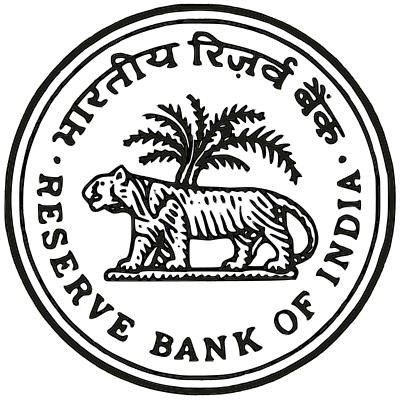
Key Points:
Licensing Framework: – RBI to issue licenses to third-party POS operators. – Regulated entities like banks and NBFCs already in the POS business will not be impacted.
Objective: – Ensure harmony in operations and level playing field between online and offline payment operators.
Growth of Third-Party Operators: – Third-party offline payments operators are growing faster than regulated entities. – They maintain daily average balances of ₹400 crore, compared to ₹1,000 crore in the online space.
Licensing Requirements: – POS operators may need to comply with norms such as minimum net worth of ₹25 crore and fit and proper conditions.
Cash for Swipe: – Cash loans on credit cards are increasing in the informal sector through high-value, one-time swipes at POS. – Third-party operators are responsible for KYC, but the system is not foolproof.
Data Storage: – Data storage of POS transactions varies among operators, creating security concerns. – RBI seeks harmony in data storage practices.
Fund Management: – Concerns about fund management with third-party players due to non-instantaneous settlement to merchants. – Unregulated entities stocking cash poses a risk.
Japanese Flavor and Fragrance Company Embarks on Significant Expansion in India
Takasago International India, a leading flavor and fragrance company, plans to expand its operations in India to capitalize on growth opportunities. The company has established a facility in Chennai for research, development, and manufacturing, with a capacity of 20,000 tonnes annually. Takasago aims to bring Japanese technology to India and cater to the unique fragrance preferences of Indian consumers. The company has also set up an International India Fragrance Centre in Mumbai to conduct fragrance research and offer personalized consultations.
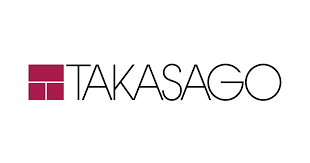
Key Points
Expansion Plans – Takasago plans to expand its operations in India to support its strong growth. – The company has set up a facility in Chennai for research, development, and manufacturing. – The facility has a capacity to produce 20,000 tonnes of flavors and fragrances annually.
Japanese Technology – Takasago plans to bring Japanese technology to India to provide unique and differential experiences to consumers. – The company aims to cater to the specific fragrance preferences of Indian consumers.
International India Fragrance Centre – Takasago has established an International India Fragrance Centre in Mumbai. – The center will conduct fragrance research, creation, and development. – It will also offer personalized fragrance consultations and experiences.
Sustainable Ingredients – Takasago plans to explore the use of sustainable or ethically sourced ingredients in fragrance creation at the Mumbai center. – The company aims to target the Indian market with these fragrances.
Global Growth Engine – Takasago aims to make India its global growth engine. – The company plans to create fragrances for India in India.
Sourcing from India – India’s role in global sourcing for Takasago has increased since the company’s entry into the country. – Takasago is getting into know-how transfer with key suppliers in India. – The company is expanding its sourcing from India to include naturals and spices.
Product Range – Takasago’s flavors are used in various food products, including frozen desserts, beverages, and processed foods. – Its fragrance products are used in soaps, detergents, cosmetics, and perfuming agents.
The Imperative for a Comprehensive National Policy on Assistive Technology
Assistive technologies (AT) empower individuals with disabilities to overcome obstacles and participate fully in society. A National Policy on Assistive Technology in India is crucial to promote social inclusion and address the unmet needs of millions of people with disabilities.

Key Points:
1. Importance of Assistive Technologies: – AT devices, equipment, and software enable individuals with disabilities to overcome challenges and live fulfilling lives. – They include hearing aids, wheelchairs, Braille devices, and screen readers.
2. Prevalence of Disability and AT Need: – A survey in India found that 31.8% of the population experiences some form of disability. – 27.8% of the population has a need for AT.
3. Unmet AT Needs: – 9.7% of individuals with AT needs do not have access to them. – Those with significant or complete challenges have a 52.3% unmet need rate.
4. Human Rights and Social Inclusion: – The UN Convention on the Rights of Persons with Disabilities recognizes the right to access AT. – A National AT Policy is essential for ensuring human rights and social inclusion.
5. Call for Action: – India needs a comprehensive National Policy on Assistive Technology to address the disparity in AT access. – This policy should align with international agreements and human rights norms.
Loan Growth and Reduced Credit Costs to Boost Bank Profits Despite Margin Compression
Banks’ profitability is expected to moderate in Q4 FY24 to around 10% year-over-year due to muted net interest income (NII) growth and shrinking margins. Margins are projected to decline due to rising cost of funds, declining credit-to-deposit ratio, and re-pricing of back-book deposits. However, profitability is expected to improve sequentially due to lower operating expenses, AIF relief, and treasury gains.
Key Points
Margins – Margins expected to shrink 3-12 bps on quarter due to increased cost of funds, declining credit-to-deposit ratio, and back-book deposit re-pricing.
Profitability – Profitability seen moderating to 10% y-o-y in Q4 FY24. – Sequential improvement in profitability expected due to lower opex, AIF relief, and treasury gains.
Credit and NII Growth – Broad-based sequential traction in credit growth, driven by services and retail segments. – NII growth projected at 4.4% y-o-y and 1.8-2.8% q-o-q.
Asset Quality – Gross NPA ratios expected to moderate to 2.0-2.7% from 2.9% in Q3 FY24. – Net NPA ratio seen declining to around 0.5%. – Credit cost expected to remain at normalized levels.
Economic Stimulus Essential for Reinvigorating Business Confidence: TCS CFO Samir Sheksaria
TCS CFO Samir Seksaria expresses cautious optimism for FY25 despite beating market estimates in Q4 FY24. While margins have improved, macro uncertainties and project pauses due to industry pullback remain concerns. TCS is confident in its deal pipeline and execution capabilities but acknowledges the need for an economic trigger to change market sentiment.
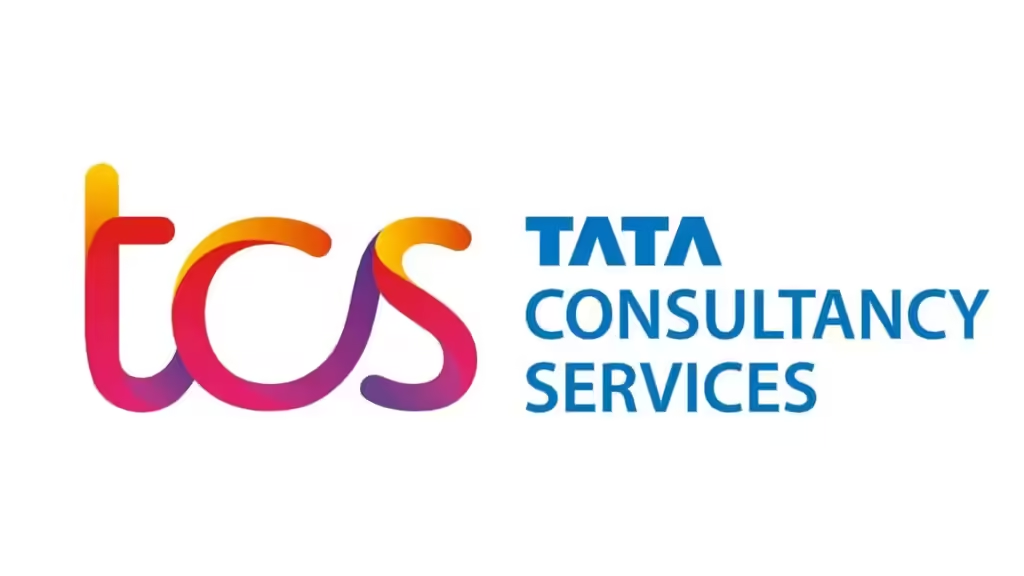
Key Points
Margins – Margins have reached the 26-28% band after three fiscal years. – Annual increments and macro uncertainties may impact margins in the next quarter. – Growth is expected to drive margin gains in the future.
Turnaround Timeline – Timeline for a turnaround in FY25 is unclear. – TCS is confident in the medium to long term due to deal wins and execution capabilities. – Economic trigger is needed to change cautious industry sentiment.
Deal Pipeline – Discretionary spends are still not back, leading to a preference for cost optimization deals. – TCS has benefited from cost optimization deals due to its execution pedigree. – Future order book includes a mix of tech transformation and cost optimization projects.
Mega Deals – TCS has a few mega deals in discussion but cannot provide an exact number for FY25. – Mega deals can take 18-24 months to materialize.
Cost Optimization Measures – Subcontractor cost optimization is an ongoing measure. – TCS will tap into its bench rather than subcontractors in case of unexpected demand.
Gen AI for Cost Optimization – TCS is using gen AI for internal cost optimization but results are yet to be seen. – Productivity gains from gen AI are still in early stages.
Indian Pharmaceutical Exports to the US Witness a 15% Surge in FY24 (11 Months)
India’s pharmaceutical exports to the US have witnessed a significant surge of 15% in the first 11 months of FY23, despite regulatory challenges and pricing pressures. This growth marks a notable improvement from the 6.18% growth recorded in the same period of FY22.

Key Points:
- Growth in US Exports: Exports to the US increased from $6.8 billion to $7.83 billion during the April-February period of FY23.
- Contribution to Total Exports: The US accounts for approximately 30% of India’s total pharmaceutical exports.
- Positive Growth after Negative Trend: The growth in US exports is a positive development after a period of negative growth in 2022.
- Regulatory Challenges: India’s exports have faced regulatory challenges from the US Food and Drug Administration (USFDA), including slower approval rates.
- Sluggish US Market: The US local market has also experienced sluggishness, contributing to the slowdown in exports.
Basmati Rice and Tea Exporters Apprehensive Amidst Iran-Israel Tensions
Indian exporters of basmati rice and tea are concerned about the potential impact of Iran’s attack on Israelon their shipments to the region. Iran is a major importer of both commodities, and any escalation of conflict could disrupt shipping routes and impact exports.

Key Points:
Basmati Rice Exports:
- Iran accounted for $598 million of India’s basmati rice exports in the first 11 months of the last fiscal year.
- Exporters fear that conflict in the region could heavily impact shipments.
- Shipping routes may change, making it difficult for exporters to deliver their products.
Tea Exports:
- Iran is a major consumer of Indian tea, and exporters were expecting to expand their business this year.
- Shipments could be impacted if Israel retaliates and the conflict escalates.
- Exporters are concerned about the potential loss of sales and disruption to their supply chain.
Rice Exporters Grapple with Hefty Tax Burden of Rs 2,000 Crore
Indian customs authorities have demanded additional duty payments from major rice exporters due to the imposition of a 20% export duty. The notices cover the period from September 2022 to January 2023, and the tax demand could amount to Rs 2,000 crore. Exporters claim that the additional duty is a “tax on tax” and fear similar demands for other agricultural commodities with export duties.

Key Points:
Export Duty on Rice: – India imposed a 20% export duty on white rice in September 2022 and on parboiled rice in August 2023 to control domestic prices.
Customs Duty Demand: – Customs authorities are demanding additional duty payments from 45 major rice exporters for the period September 2022 to January 2023. – The tax demand could be around Rs 2,000 crore. – Some port authorities are holding up shipments until the duty is paid.
Exporters’ Grievances: – Exporters claim that the additional duty is a “tax on tax” as they are already paying 20% duty based on the Free on Board (FOB) value of rice. – They argue that the duty should only be calculated on the FOB value, not the entire value charged to customers.
Government’s Position: – Customs authorities maintain that duty needs to be paid on the entire value charged to customers.
Impact on Rice Exports: – The additional duty demands could disrupt future rice shipments from India. – Exporters fear similar demands for other agricultural commodities with export duties, such as sugar, molasses, and onion.
Escalating Iran-Israel Tensions Pose Risks to India’s European Exports
The Iran-Israel conflict has disrupted shipping routes in the Red Sea region, leading to a surge in air freight volume and costs to Europe. Exporters anticipate a 10-15% increase in air freight volume, higher logistics and insurance costs, and a potential impact on engineering exports to Europe.
Key Points:
- Air Freight Volume: Air freight volume to Europe is expected to rise by 10-15% due to the closure of Iranian airspace.
- Air Freight Costs: Air cargo costs to Europe have surged to ₹140 per kg from ₹35 three months ago.
- Shipping Costs: Longer shipping routes have inflated shipping costs by 40-60% and caused delays of around 20 days.
- Insurance Premiums: Insurance premiums have increased by 15-20% due to higher risks.
- Cargo Loss: There is a potential for cargo loss due to piracy and attacks.
- Engineering Exports: Engineering exports to Europe are expected to be impacted, with a potential 30-35% reduction in new project exports.
EPFO to Enhance Services Amidst Growing Membership
The government plans to revamp the Employees’ Provident Fund Organisation (EPFO) to enhance service delivery and extend universal social security coverage. The changes include restructuring offices, automating claim settlements, and cadre restructuring.
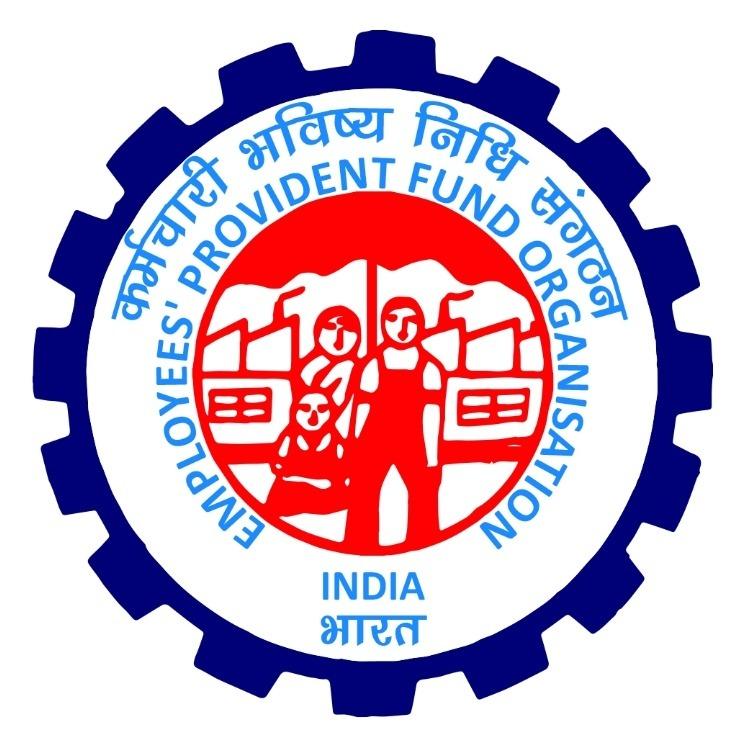
Key Points:
1. Vision and Objectives: – Create an innovation-driven social security organization. – Extend universal coverage and ensure seamless services through technology.
2. Reforms Study: – IIT Delhi commissioned to study reforms for improved efficiency. – Report expected later this month.
3. Human Resource: – EPFO’s staff strength has declined by 21.3% in the last 10 years. – Claims settled have increased by over three and a half times. – Need for boosting human resources and cadre restructuring.
4. Governance Interventions: – Establishing a centralized database at the pan-India level. – Leveraging technology for automatic claim settlement.
5. Infrastructure Restructuring: – Restructuring of EPFO offices underway. – Cadre restructuring to be considered after holistic review.
6. Subscriber Base and Workload: – EPFO’s subscriber base has increased significantly in recent years. – Net subscriber addition has jumped by over 126% in five years.
Electric Motorcycles: Poised to Dominate the EV Market
Electric motorcycles are poised to revolutionize the Indian automotive industry, with startups and traditional manufacturers alike introducing high-performance models that rival their petrol-driven counterparts. This breakthrough is expected to drive e-motorcycle penetration to over 30% of the overall motorcycle market by 2030.
Key Points:
1. Market Potential: – E-motorcycle penetration is projected to reach over 30% of the motorcycle market by 2030. – Several startups and traditional manufacturers are launching new electric motorcycle models.
2. Performance Parity: – Electric motorcycles are now achieving price and range parity with ICE counterparts. – E-motorcycles can run 307 km on a single charge, compared to 250 km for ICE motorcycles.
3. Advanced Technology: – Electric motorcycles feature instant torque, ride-by-wire technology, and over-the-air software updates. – Falling battery prices have enabled manufacturers to pack more power at lower costs.
4. Consumer Demand: – Consumers are demanding electric motorcycles that match the performance of ICE counterparts. – There is a growing preference for higher-end electric motorcycles.
5. Industry Partnerships: – Indian two-wheeler majors are partnering with global players for e-motorcycle development. – Hero MotoCorp is partnering with Zero Motorcycles, while TVS Motors has invested in Ultraviolette Automotive.
6. Government Support: – India’s FAME II Scheme provides demand incentives for electric vehicles. – However, high-performance electric motorcycles may not qualify for subsidies.
Enhanced KYC and Due Diligence Measures Proposed for Merchants and Business Correspondents
The finance ministry has proposed stricter KYC procedures and due diligence for banks and financial institutions onboarding merchants to combat financial fraud and protect customers from cyber risks. This includes enhanced data security and protection measures at the merchant and business correspondent (BC) level, as well as reviewing the concentration of BCs in cyber fraud hotspots.
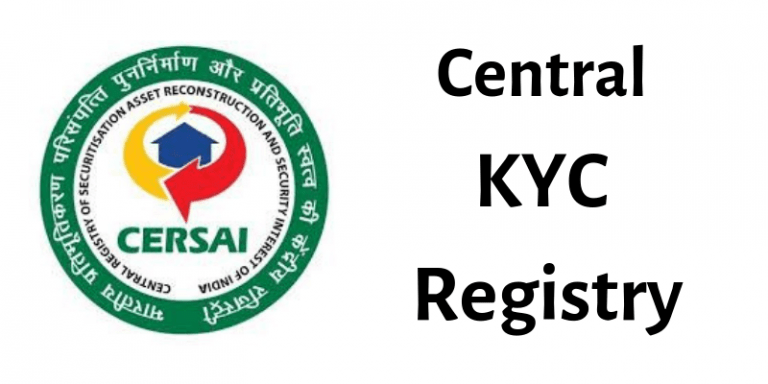
Key Points:
- Enhanced KYC and Due Diligence:
- Banks and financial institutions must implement stricter KYC procedures and conduct thorough due diligence on merchants to prevent fraud.
- Data Security and Protection:
- Merchants and BCs must strengthen data security and protection measures to reduce the risk of data compromise.
- Review of BC Concentration:
- The Reserve Bank of India (RBI) may advise banks to review the concentration of BCs in cyber fraud hotspots and take appropriate action, such as blocking micro ATMs involved in fraud.











